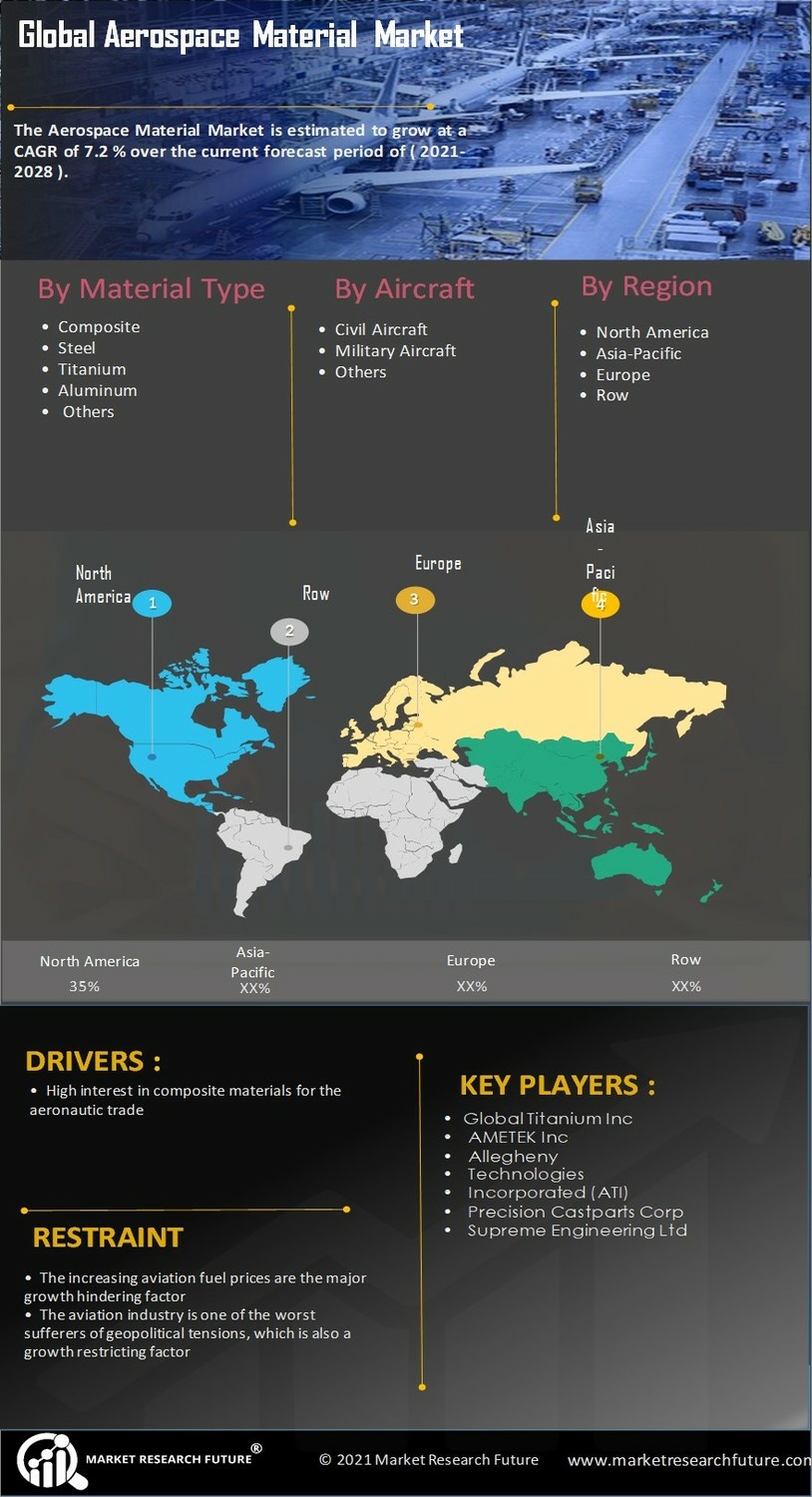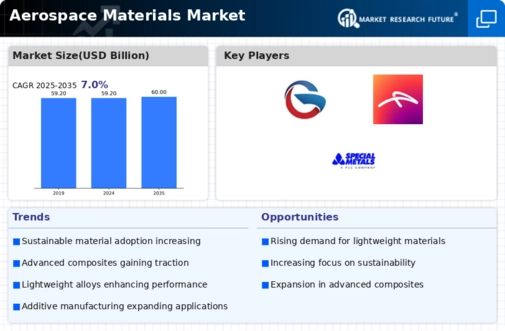Market Trends and Projections
The Global Aerospace Materials Market Industry is characterized by various trends and projections that reflect its dynamic nature. The market is expected to reach a value of 60 USD Billion by 2035, with a modest CAGR of 0.12% anticipated from 2025 to 2035. Factors such as technological advancements, regulatory changes, and shifts in consumer preferences are likely to shape the industry's landscape. The increasing focus on sustainability and lightweight materials will further influence market dynamics. Understanding these trends is essential for stakeholders to navigate the evolving aerospace materials landscape effectively.
Increasing Focus on Sustainability
The Global Aerospace Materials Market Industry is witnessing a shift towards sustainability, as manufacturers prioritize environmentally friendly materials and practices. The aerospace sector is increasingly adopting bio-based composites and recyclable materials to minimize its ecological footprint. This trend aligns with global efforts to reduce greenhouse gas emissions and promote sustainable aviation. For instance, companies are exploring the use of natural fibers and resins in aircraft production. The emphasis on sustainability is likely to drive innovation and investment in new materials, contributing to the market's anticipated growth at a CAGR of 0.12% from 2025 to 2035.
Expansion of the Aerospace Industry
The expansion of the aerospace industry is a key driver of the Global Aerospace Materials Market Industry. As global air travel continues to grow, there is an increasing demand for new aircraft and upgrades to existing fleets. This expansion necessitates a corresponding increase in the supply of aerospace materials, including composites, metals, and alloys. The rise in commercial and military aircraft production is expected to bolster the market, with projections indicating a market value of 59.2 USD Billion in 2024. The ongoing development of new aircraft models, such as the next-generation commercial jets, further underscores the need for advanced materials to meet performance and efficiency standards.
Growing Demand for Lightweight Materials
The Global Aerospace Materials Market Industry experiences a notable increase in demand for lightweight materials, driven by the need for fuel efficiency and reduced emissions. Aircraft manufacturers are increasingly adopting advanced composites and aluminum alloys to achieve weight reduction. For instance, the use of carbon fiber reinforced polymers is becoming prevalent, as these materials can reduce aircraft weight by up to 20 percent. This trend is expected to contribute to the market's projected value of 59.2 USD Billion in 2024, as airlines seek to lower operational costs and enhance performance. The shift towards lightweight materials is likely to shape the industry's future significantly.
Regulatory Compliance and Safety Standards
Regulatory compliance and safety standards significantly influence the Global Aerospace Materials Market Industry. Stringent regulations imposed by aviation authorities necessitate the use of high-quality materials that meet safety and performance criteria. Manufacturers are compelled to invest in advanced materials that comply with these regulations, ensuring the safety of passengers and cargo. For example, the Federal Aviation Administration (FAA) mandates rigorous testing and certification processes for aerospace materials. This focus on compliance not only enhances safety but also drives innovation in material development, ultimately supporting the market's growth and stability.
Technological Advancements in Material Science
Technological advancements in material science play a crucial role in the Global Aerospace Materials Market Industry. Innovations such as additive manufacturing and nanotechnology are enabling the development of high-performance materials with superior properties. For example, the introduction of titanium alloys with enhanced strength-to-weight ratios allows for more efficient aircraft designs. These advancements not only improve the durability and performance of aerospace components but also reduce production costs. As the industry continues to evolve, the integration of these technologies is expected to support the market's growth trajectory, potentially reaching 60 USD Billion by 2035.













